Location intelligence and foot traffic analytics are transforming the way retail strategies are defined, and department stores are no exception.
The correlation between foot traffic, sales, and the success of department stores have been studied and proven, so the development of this type of analysis has become a priority in the site selection process and expansion modeling.
Case Study
Foot traffic analytics: El Palacio de Hierro Vs. El Puerto de Liverpool in Mexico City, Mexico
At PREDIK Data-Driven we conducted a detailed study of two of Mexico’s most popular department stores in the Polanco neighborhood, an exclusive residential, commercial, and hotel area in Mexico City: Liverpool and El Palacio de Hierro.
In this case study, we analyze the mobility and pedestrian traffic inside and outside both stores, in order to understand the behavioral patterns of consumers visiting both franchises. This analysis aims to answer the following questions:
How are visits distributed in each establishment?
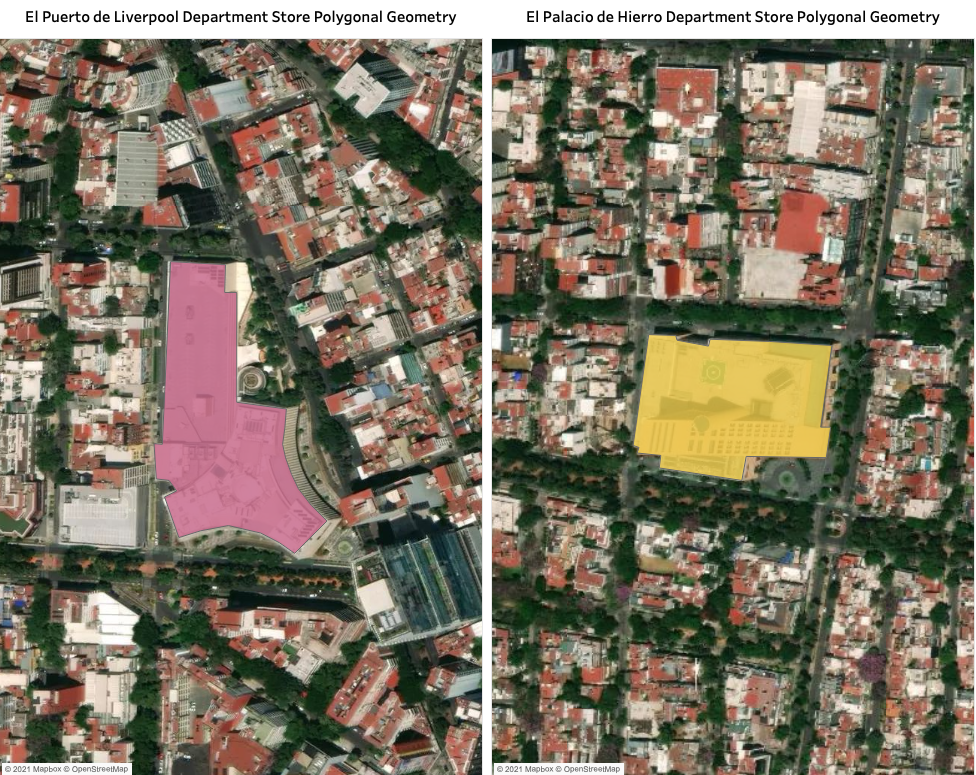
Through location analytics, we identify the points of interest and apply a heat map to visualize the in-store mobility patterns of the clients, which allows us to visualize the customer journey, the dispersion of consumers, and the distribution of visits within both department stores.
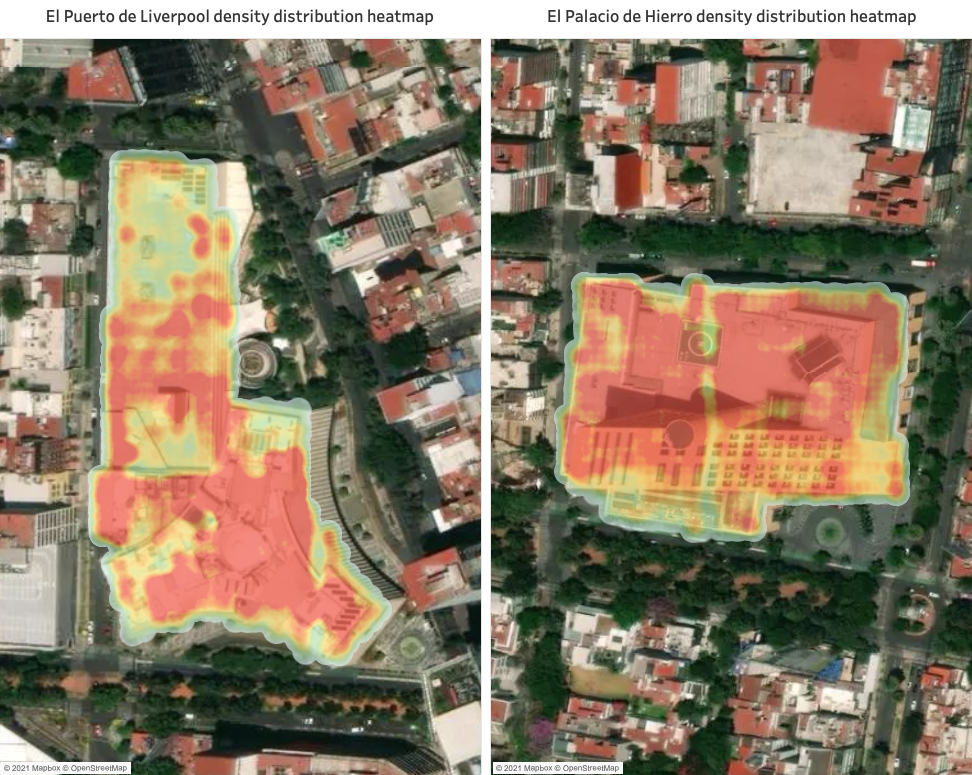
This provides very useful information when conceptualizing the design of the infrastructure and internal architectural plans that make up each establishment so that leaders can implement strategies that improve the customer journey and implement more efficient expansion models while maximizing the shopping experience of consumers.
Which of the department stores is the most visited?
Percentage distribution of visits recorded on December 2020:
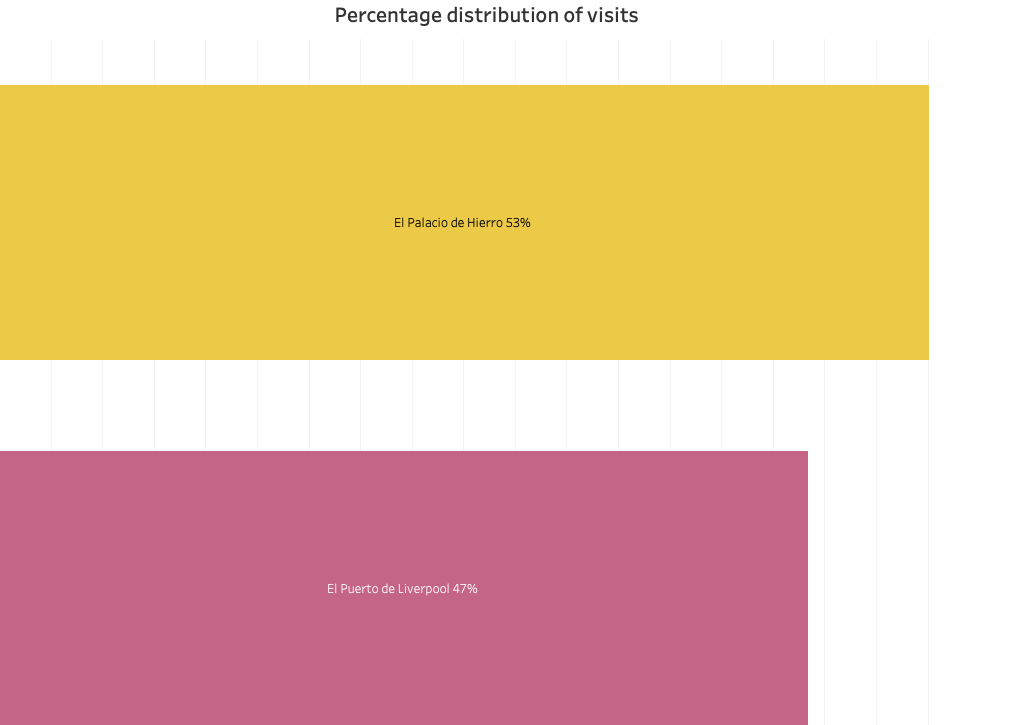
By analyzing in-store mobility using the stated time period, we identified that 53% chose to visit El Palacio de Hierro, while the remaining 47% preferred El Puerto de Liverpool, which correlates with store location and consumer preference when it comes to choosing a department store.
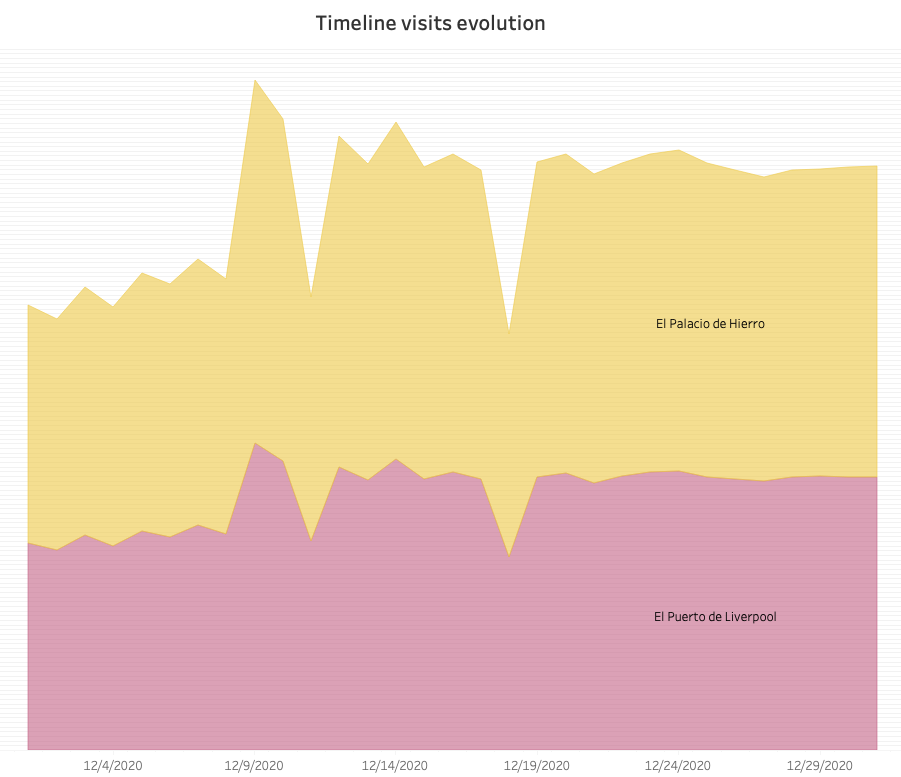
These analyses allow you to observe the evolution of visits over time, which can be very useful to identify patterns of foot traffic customer behavior and market trends in high and low traffic seasons.
Identify consumer behavior: Which days of the week are the most visited?
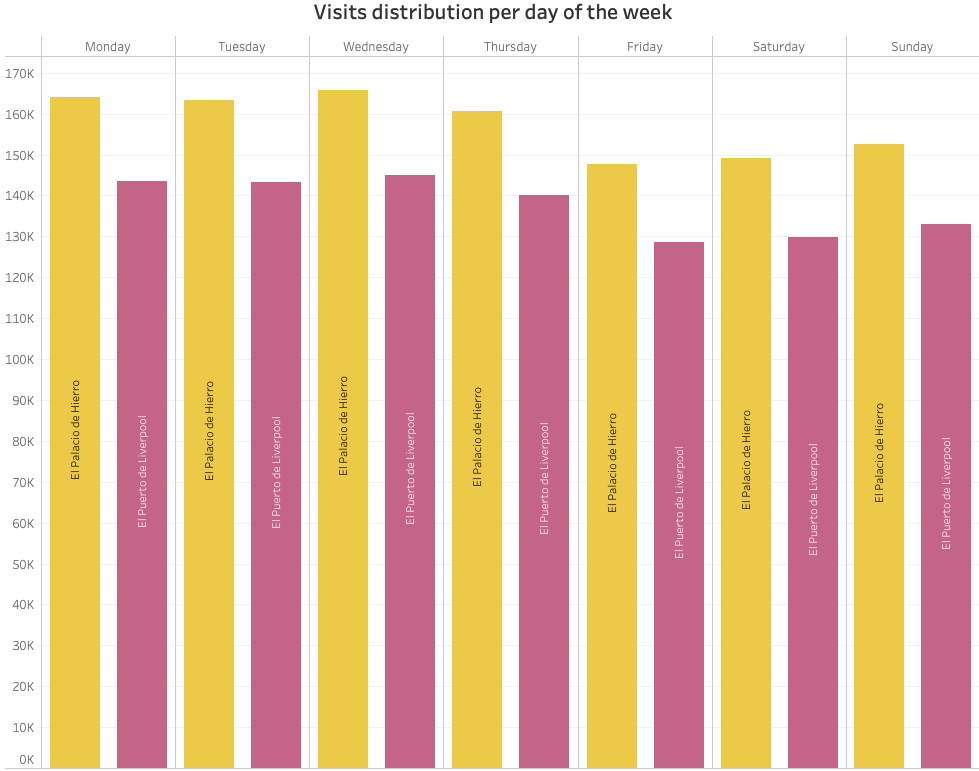
One of the most interesting applications of location intelligence is that it allows gaining detailed knowledge of customers’ behavior patterns by day, hour, month, or year, offering valuable insights to design marketing campaigns and commercial strategies based on the power hours of the department stores.
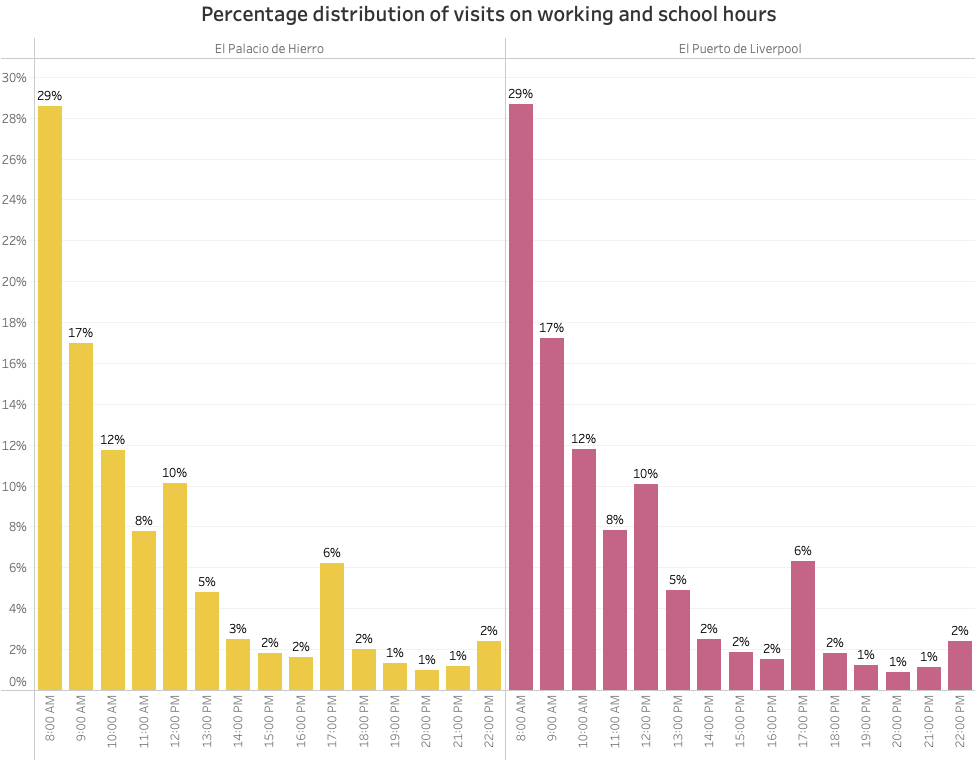
This analysis is very useful to know what is the performance of the stores at peak and off-peak hours of the day.
What is the foot traffic mobility pattern around both department stores?
Although foot traffic is related to the performance of any retail location, it is not the only key factor for success. Another fundamental aspect to be analyzed is the environment of the outlets, as it allows for comparisons and estimates of the number of visits, revenues, strategic and operational movements of the competition.
By gathering information on the competition’s potential customers, it is possible to carry out a more detailed benchmarking and generate strategies to capture the competition’s customers.
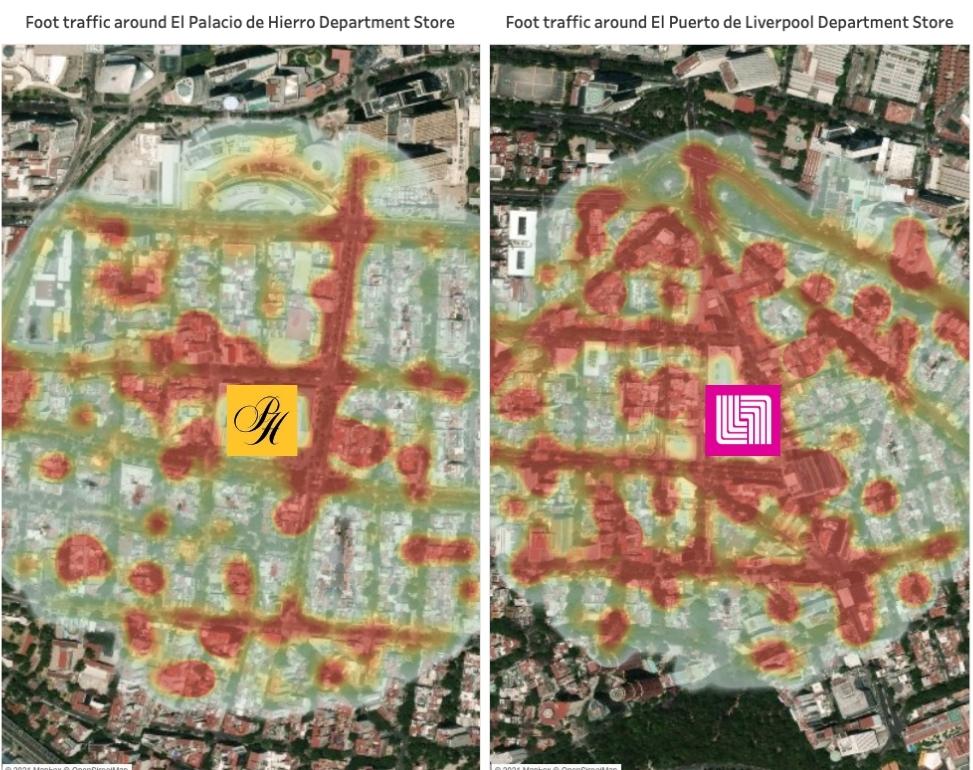
This analysis of the environment provides us with a detailed picture of the surrounding areas and the mobility patterns of people moving through the area. This data, combined with other factors, provides deep insight into predicting the revenues of any retail establishment.
What other insights can be gained by analyzing footfall at a department store?
Understand which customers visited both department stores
By analyzing data over a given period of time at a specific location, such as a clothing store, it is possible to estimate the percentage distribution of consumers who visited both department stores.
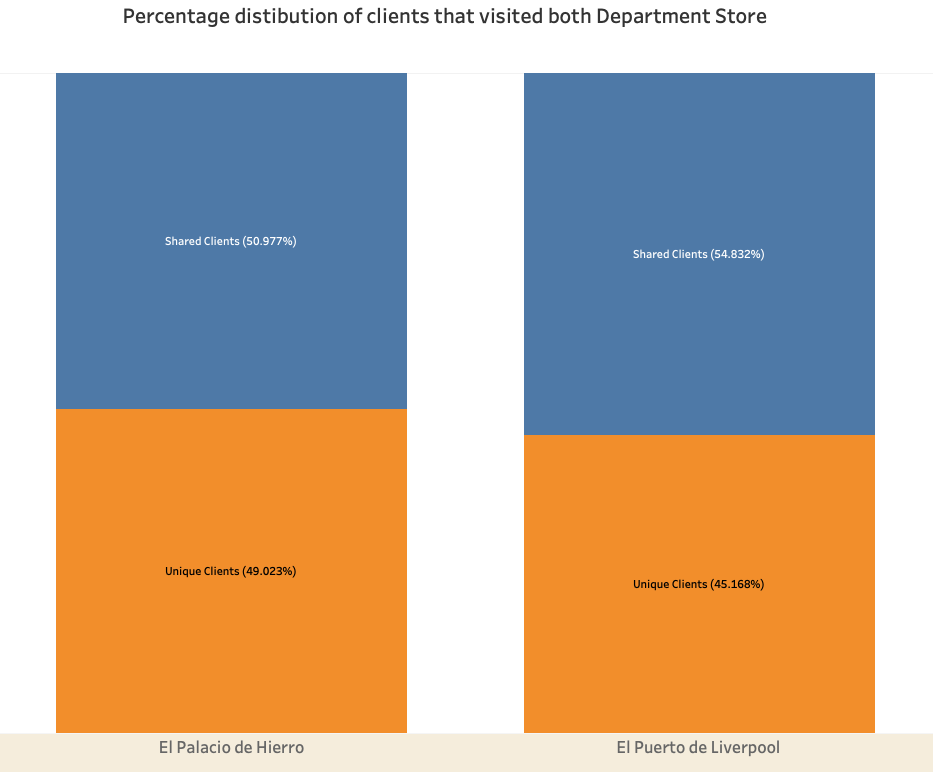
These solutions benefit any type of business, an example of this is another case study that was conducted to compare two of the most popular home improvement stores in the city of Phoenix, Arizona, USA, the findings were more than interesting. Read more about this case: “Location analytics: Whole Foods Vs. Sprouts Farmers Market“
Customer Analytics
With this analysis, it’s possible to infer in which other places (stores, restaurants, shopping malls, residential areas, among others) the people who were at a point of interest also visited. Thus, El Palacio de Hierro and El Puerto de Liverpool can analyze how their customers behave, since they can look where and how long they were before and after visiting the stores. This allows them to generate high-value insights to optimize the understanding of current consumers and search for new potential customers with similar behaviors.
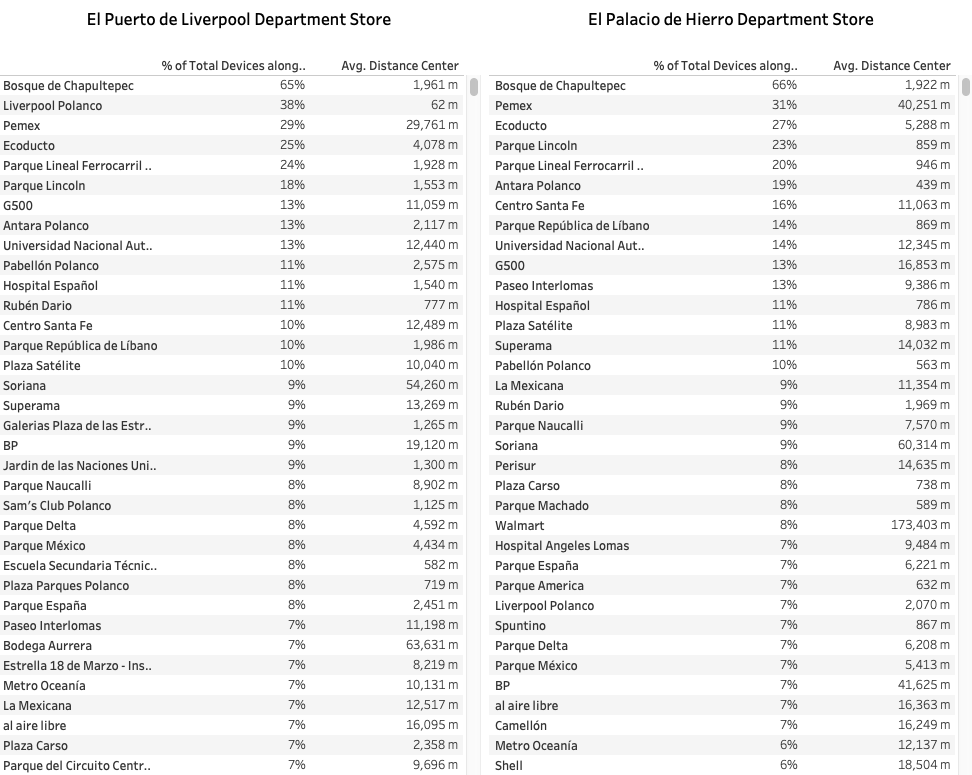
Identifying ideal areas in expansion and site selection strategies
With mobility data, it’s possible to clearly understand the behavior of the people who pass through a given area, how they’re alike, their tastes, preferences, relative wealth index, and purchasing potential. Including an in-depth analysis of the commercial establishments in the area in question, becomes a crucial factor in determining the best locations for the opening of new stores.
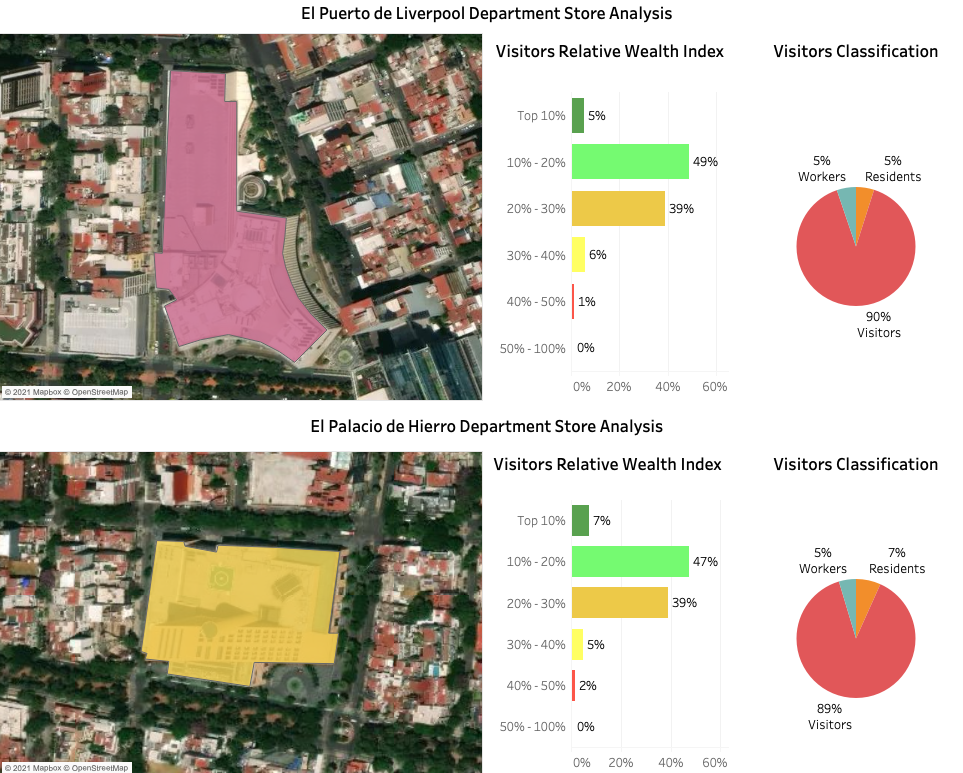
What is the revenue potential of my competitor?
Through machine learning models, it is possible to predict the turnover of a given point of sale. With these models, El Palacio de Hierro could get to know what is the potential turnover or visits of its competitor El Puerto de Liverpool in a specific week, month, or year. These models can also be used to predict the potential of a new location to be opened. This is ideal to complement feasibility studies of site selection and expansion plans.
All these insights are generated by applying location intelligence and mobility analysis, if you are interested in knowing more about these insights, we conducted a POI characterization case study in Bangalore, India POI Analytics: Uses and Applications.

